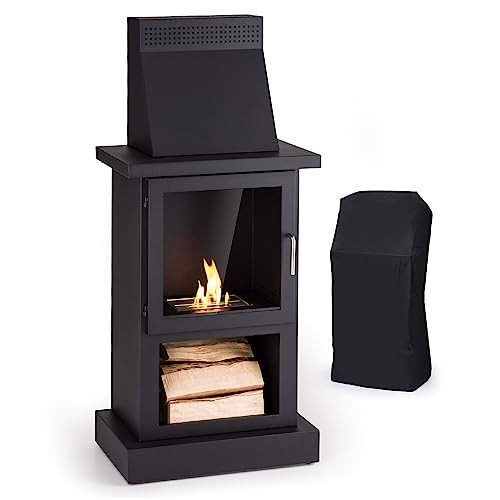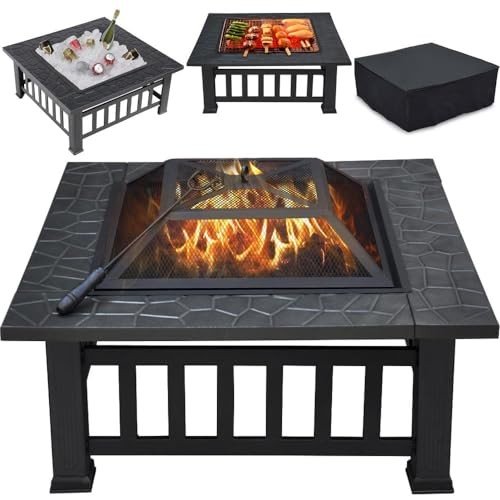The Fireplace: A Warm Embrace of Tradition and Comfort
Fireplaces have been an important part of human habitation for centuries, acting as a source of heat, a gathering location, and a sign of comfort. While the modern variations may differ remarkably from their ancient forefathers, the attraction of a fireplace online (git.barneo-tech.com) sustains. This short article explores the different aspects of fireplaces, including their history, function, types, and maintenance, while likewise resolving regularly asked questions.
The Evolution of Fireplaces
Fireplaces date back to prehistoric times when open flames were used for cooking, heating, and security from wildlife. Over the centuries, fireplaces evolved from basic fire pits to the sophisticated renditions we see today. Here is a short timeline of their development:

- Prehistoric Era: Cavemen utilized open flames for warmth and cooking. Wind and smoke typically blew into residences.
- Middle Ages: Stone and brick fireplaces ended up being typical in homes and castles, integrating chimneys to bring smoke outside.
- Renaissance: Elaborately created mantels emerged, and fireplaces ended up being centers of social interaction.
- Industrial Revolution: Innovations in heating products led to a variety of styles and performances.
- Modern Era: The advent of gas, electric, and bioethanol fireplaces supplied cleaner alternatives to traditional wood-burning systems.
Table 1: The Evolution of Fireplaces
| Era | Qualities |
|---|---|
| Ancient Era | Open flames for heat and cooking |
| Middle Ages | Stone and brick structures with early chimneys |
| Renaissance | Elaborate mantels, social centers |
| Industrial Revolution | Diverse styles, introduction of new materials |
| Modern Era | Gas, electric, and bioethanol choices |
The Purpose of a Fireplace
Fireplaces serve dual functions: they offer physical warmth and create a psychological environment. Homeowners typically gather around the fireplace to bond, share stories, and delight in a cozy setting. The radiance of a fire can be calming, adding to a sense of relaxation and intimacy. Beyond personal satisfaction, fireplaces likewise use practical benefits, including:
- Home Heating: Effective heat source, specifically in cooler environments.
- Increased Home Value: A well-designed fireplace can enhance the visual worth of a home.
- Emergency Heating: In case of power outages, wood-burning fireplaces can act as a crucial heat source.
- Visual Appeal: A centerpiece that contributes to interior decoration.
Kinds of Fireplaces
Today, fireplaces come in different styles and fuel types, accommodating a diverse variety of choices and settings. Here are some typical types:
Wood-Burning Fireplaces:
- Traditional fire pits
- Timeless masonry fireplaces
- Require considerable maintenance and chimney maintenance
Gas Fireplaces:
- Available in both direct vent and ventless ranges
- Simpler to utilize and maintain than wood-burning fireplaces
- Provide immediate heat with a flick of a switch
Electric Fireplaces:
- Offer associated heat sources without genuine flames
- Typically designed to mimic traditional fireplaces
- Perfect for smaller sized spaces and homes without a chimney
Bioethanol Fireplaces:
- Use bioethanol fuel, providing a sustainable alternative
- Require no ventilation and can be placed anywhere
- Safe and simple to maintain
Table 2: Types of Fireplaces
| Type | Fuel Source | Functions | Maintenance Requirements |
|---|---|---|---|
| Wood-Burning | Wood | High atmosphere, heat source | Routine chimney cleaning |
| Gas | Gas or propane | Instant heat | Very little, occasional maintenance |
| Electric | Electricity | Easy setup | Really low upkeep |
| Bioethanol | Bioethanol fuel | Ventless, portable | Low, mainly cleaning |
Maintenance and Safety Considerations
Owning a fireplace involves specific duties, particularly concerning its safe operation and long-term upkeep. Here are essential upkeep pointers and safety standards:
Maintenance Tips:
- Annual Inspection: Always have your chimney and fireplace examined at least when a year by a qualified service technician.
- Routine Cleaning: Clean out ashes and particles after each use, and ensure the flue is open before starting a fire.
- Examine for Cracks: Inspect masonry for fractures or damage to prevent structural concerns.
- Usage Proper Fuel: Only use dry, experienced wood for wood-burning fireplaces; do not burn treated wood.
Safety Guidelines:
- Install Smoke Detectors: Ensure smoke alarm are functional, checking them month-to-month and changing batteries as needed.
- Keep a Fire Extinguisher: Have one nearby, even if a fireplace is used rarely.
- Supervise Flames: Never leave a fire ignored, and make sure kids and family pets are monitored around the fireplace.
Frequently Asked Questions (FAQs)
1. How can I minimize smoke from a wood-burning fireplace?
To reduce smoke, use dry, experienced wood, and guarantee that your chimney is tidy and unobstructed.
2. Is it safe to use gas fireplaces during a gas leak?
Never ever use a gas fireplace throughout a gas leak. Instantly leave the area and contact gas services for assistance.
3. Can I set up an electric fireplace myself?
Electric fireplaces are typically simple to install, however it is advised to seek advice from specialists to make sure safety and compliance with regional structure codes.
4. What is the very best type of fireplace for small areas?
Electric fireplaces or bioethanol models are typically best for small areas, as they do not require comprehensive ventilation or structural adjustments.
Fireplaces have transcended their initial function of providing heat to end up being valued aspects of home style and household life. They stimulate memories of heat, celebrations, and togetherness while offering practical benefits that boost modern living. By understanding the various types of fireplaces, their upkeep, and security practices, house owners can take pleasure in the ageless appeal of this cherished feature for generations to come.



